
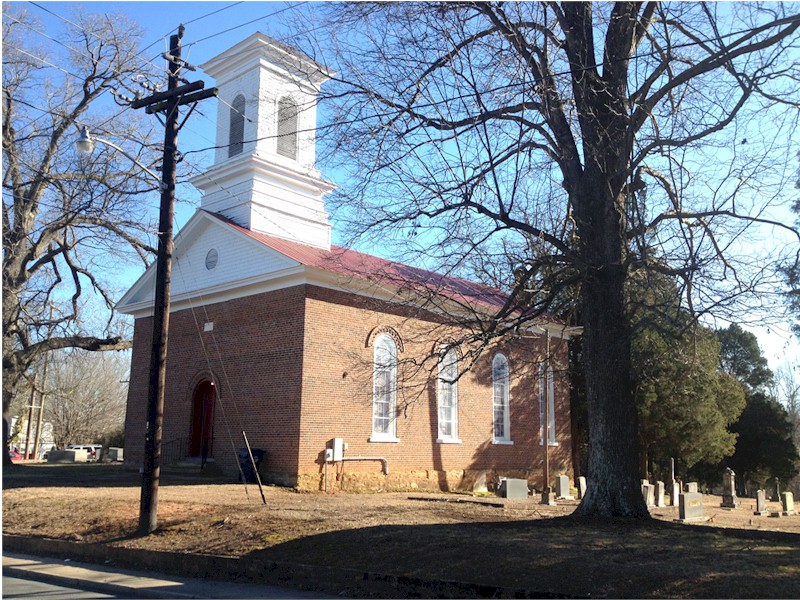
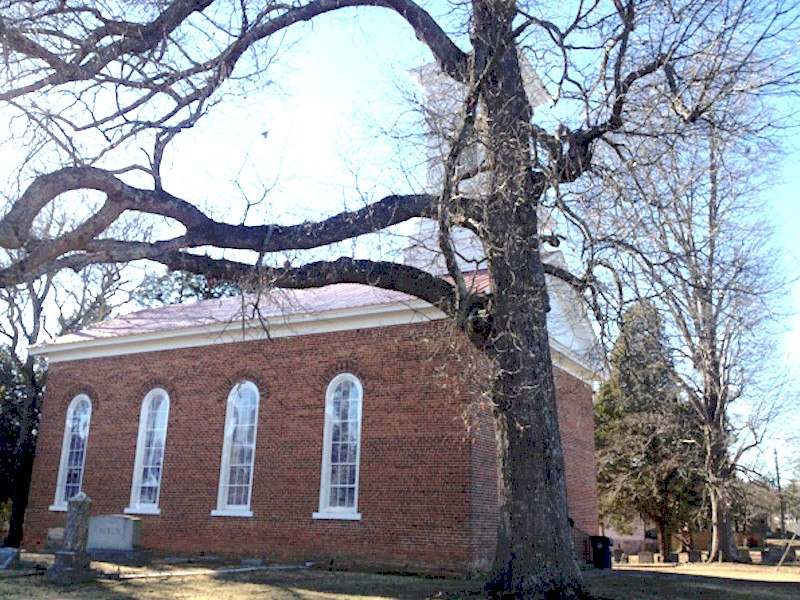
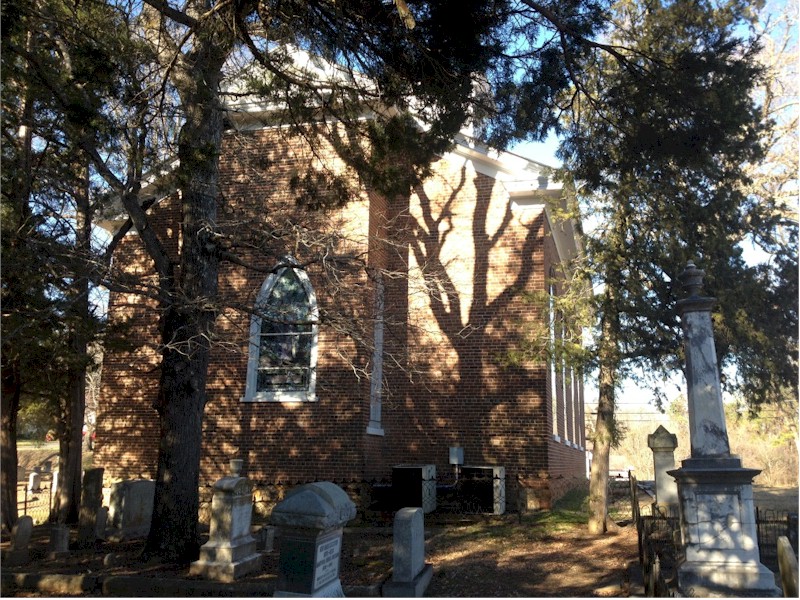
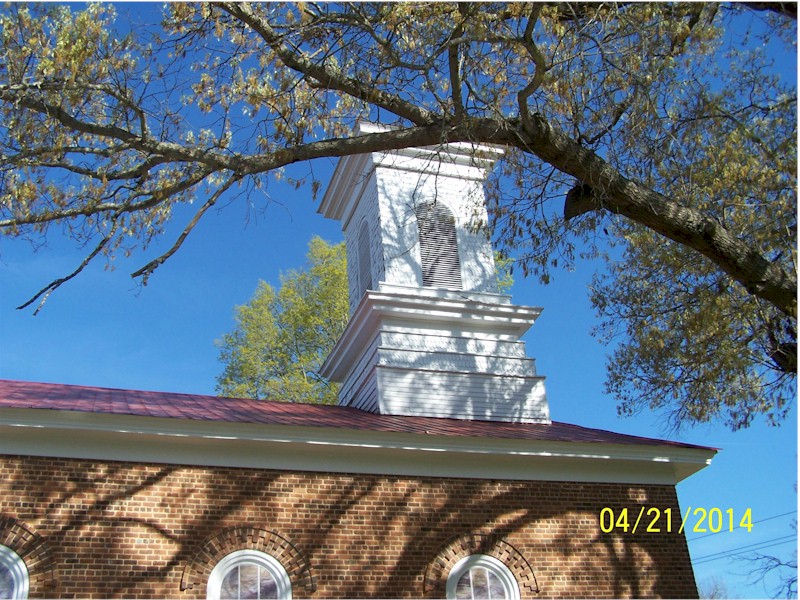
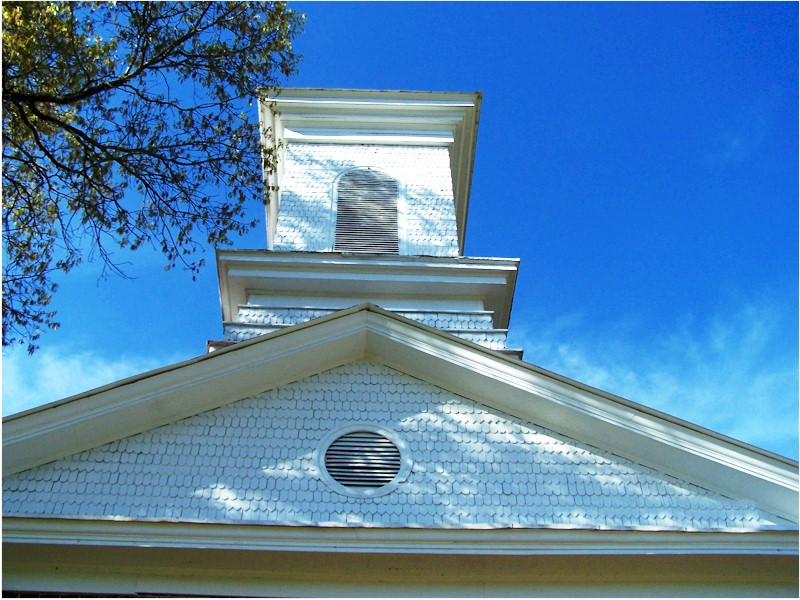
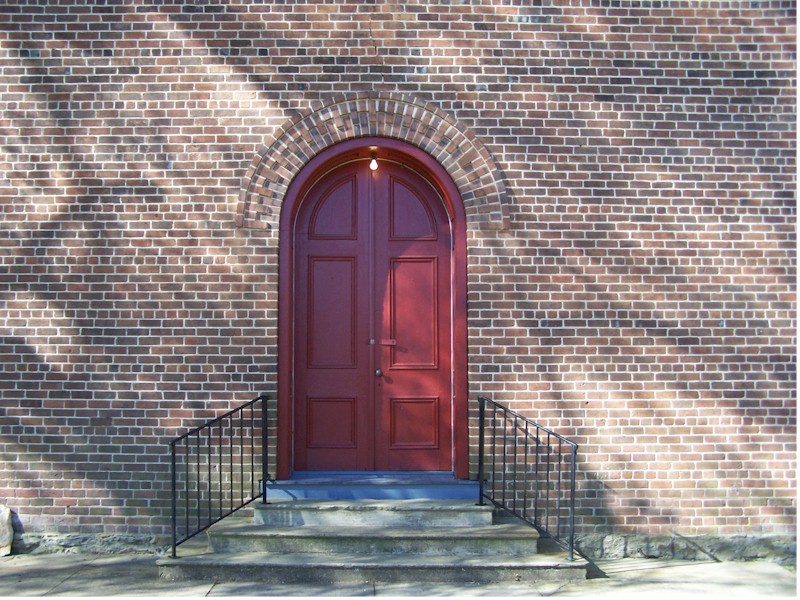
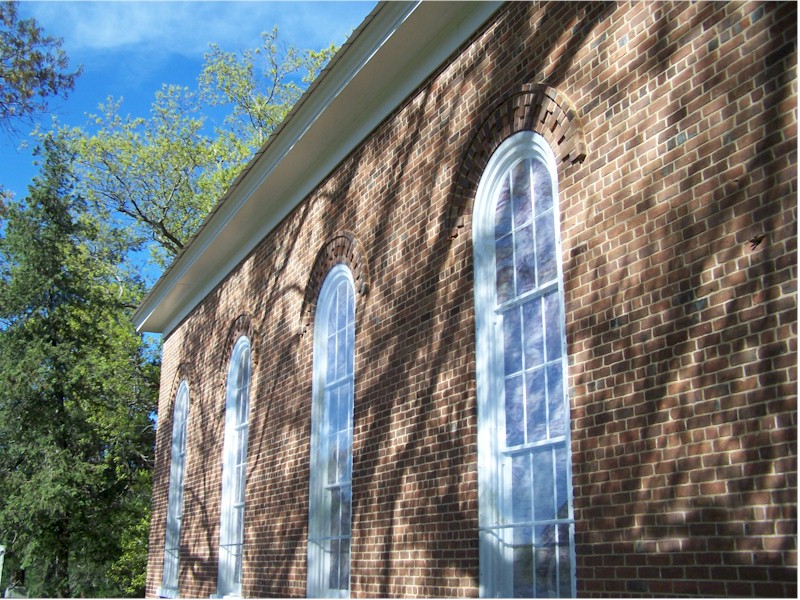
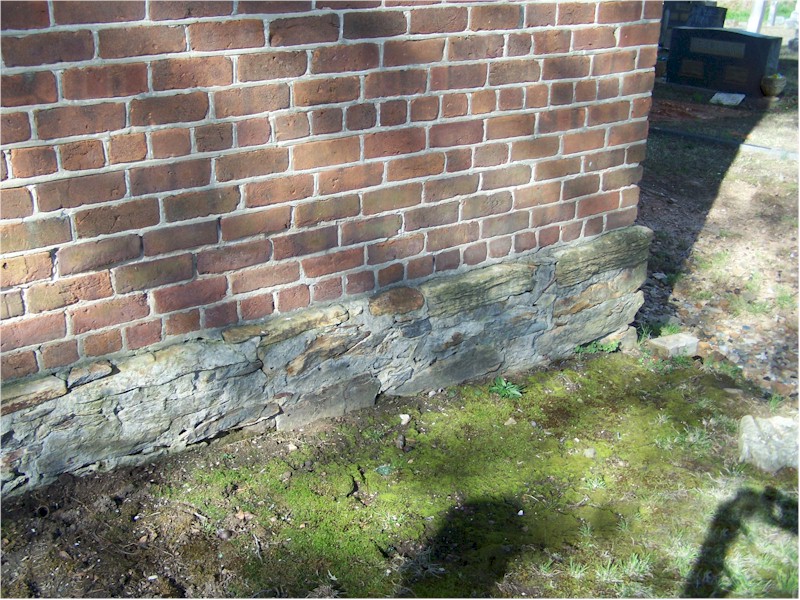
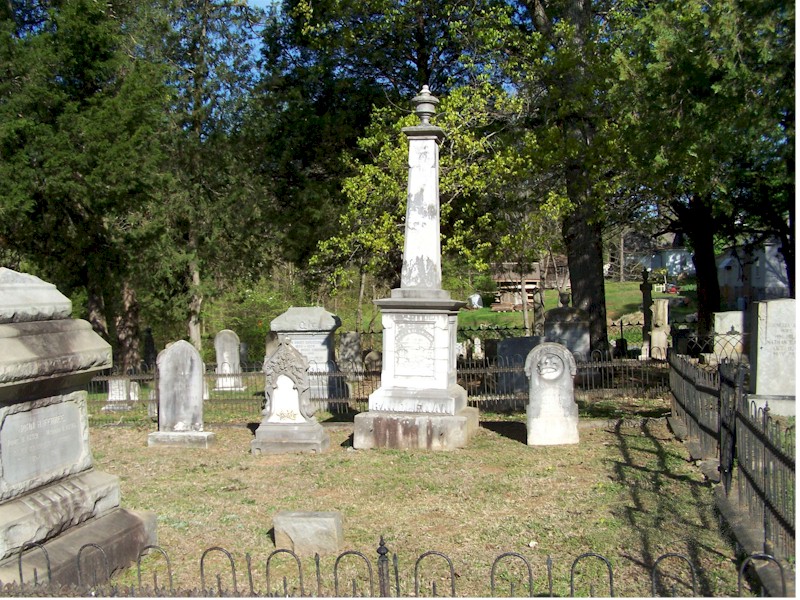
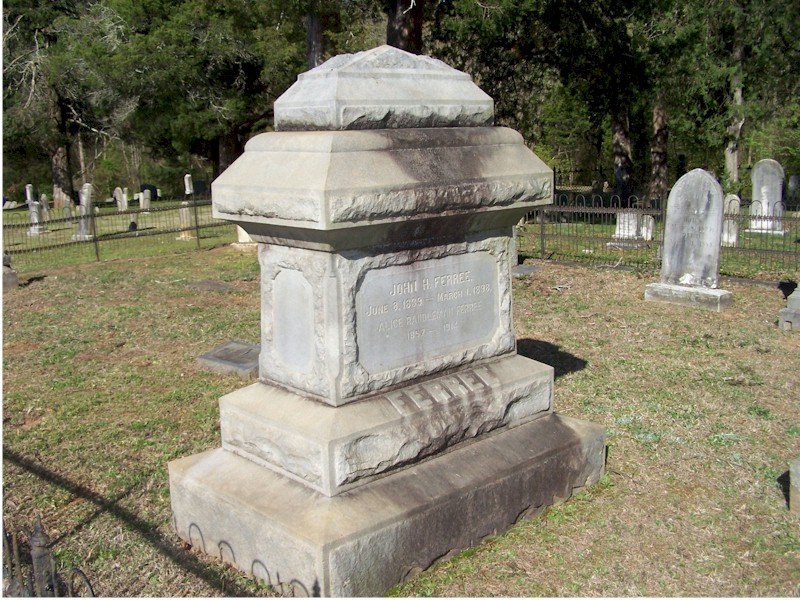
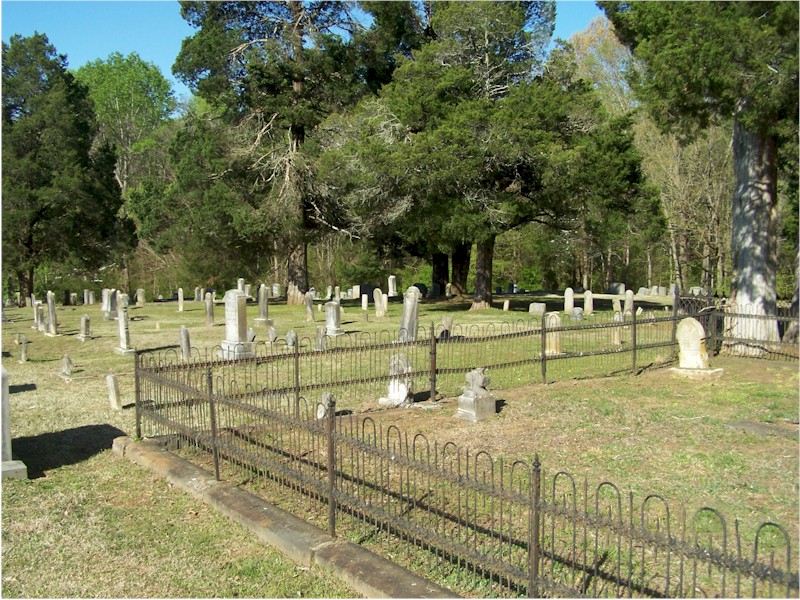
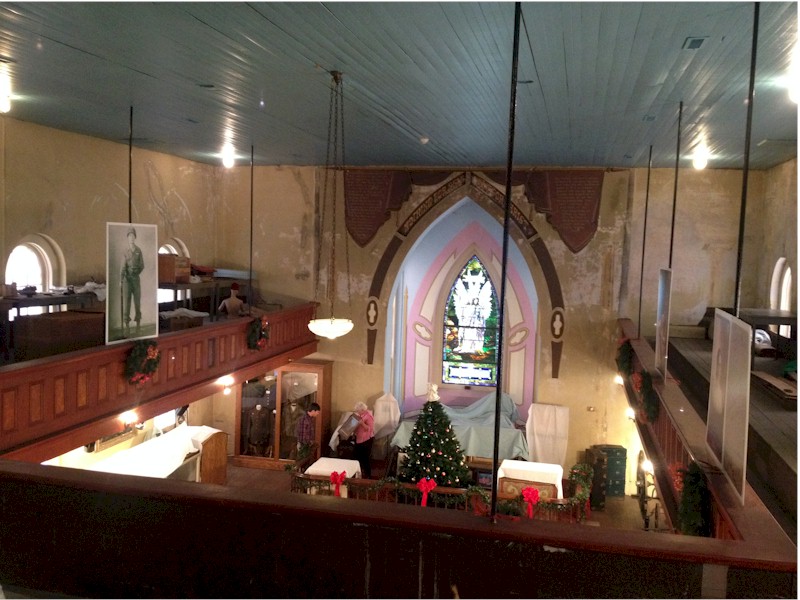
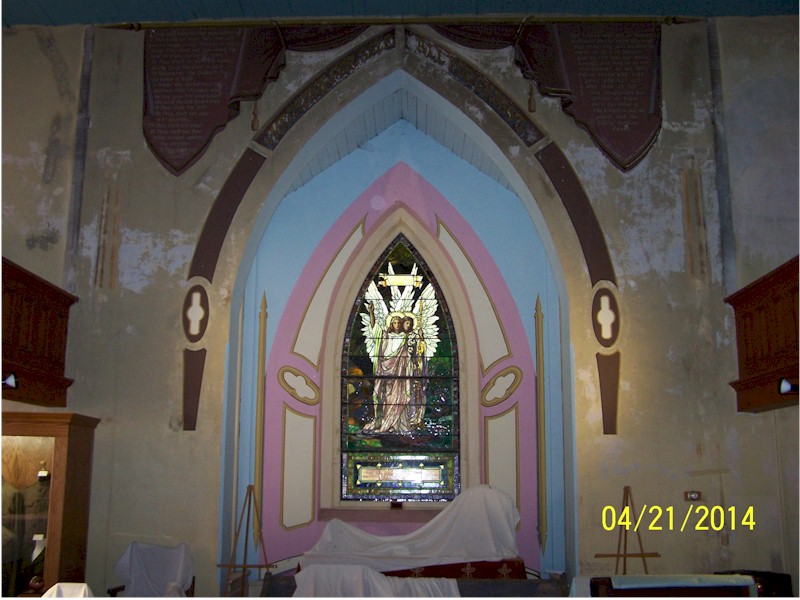
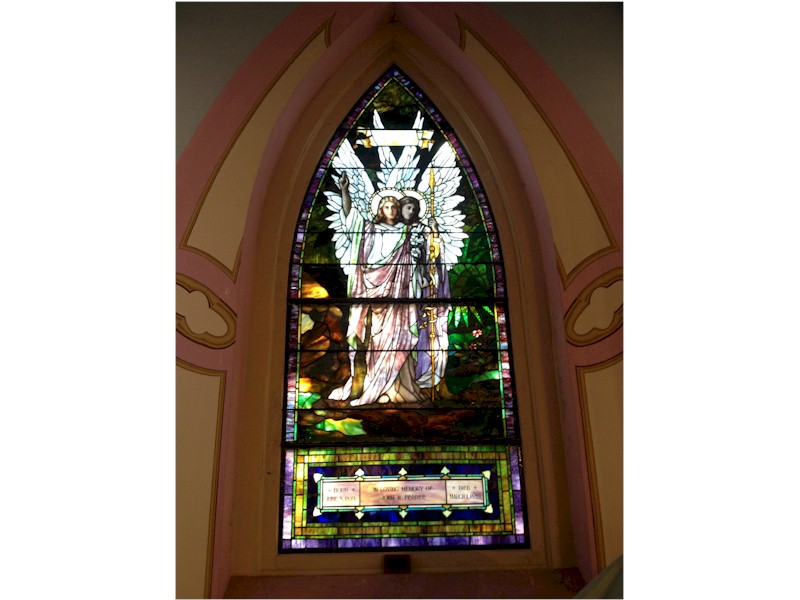
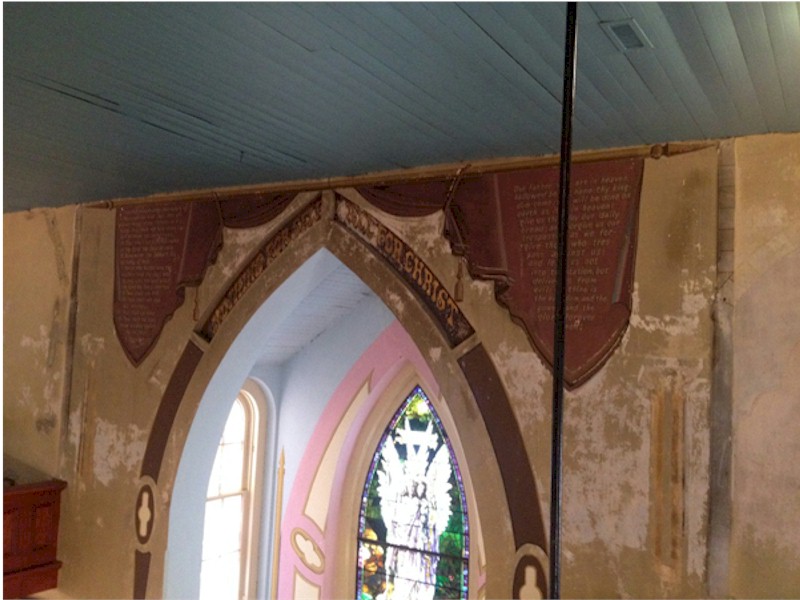
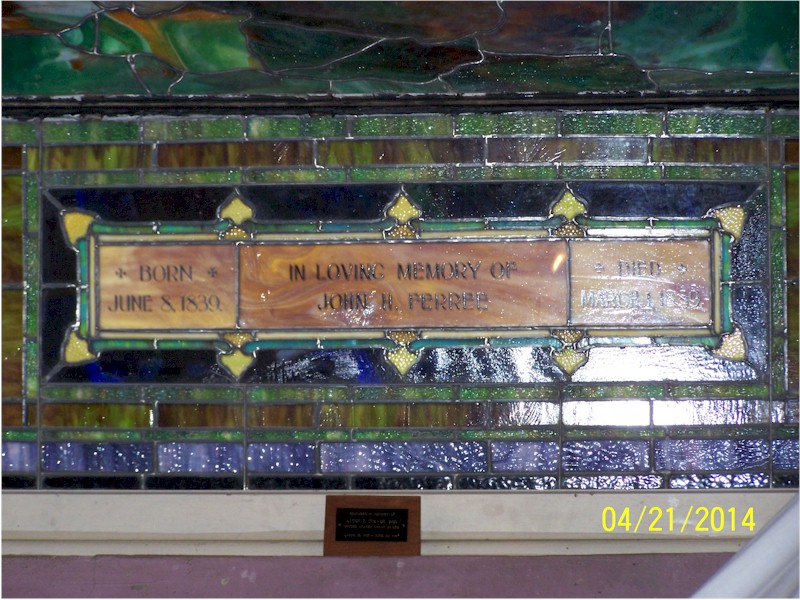
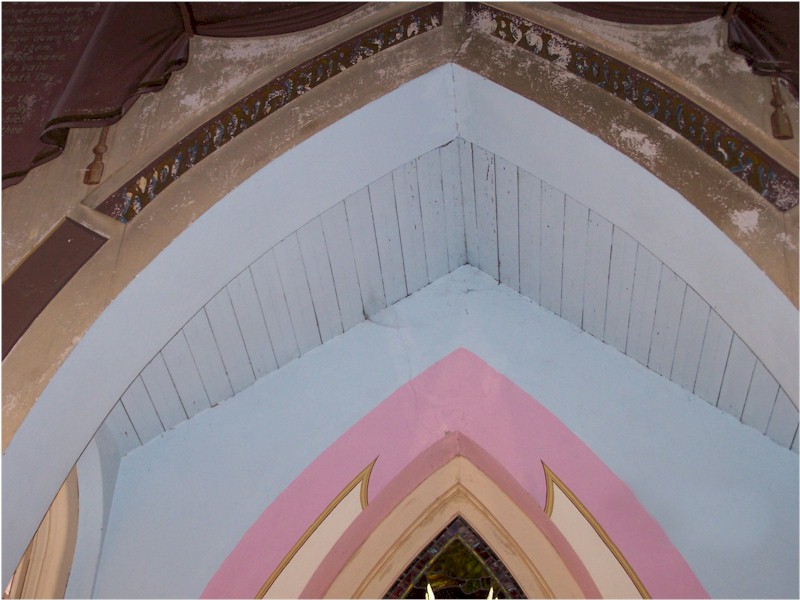
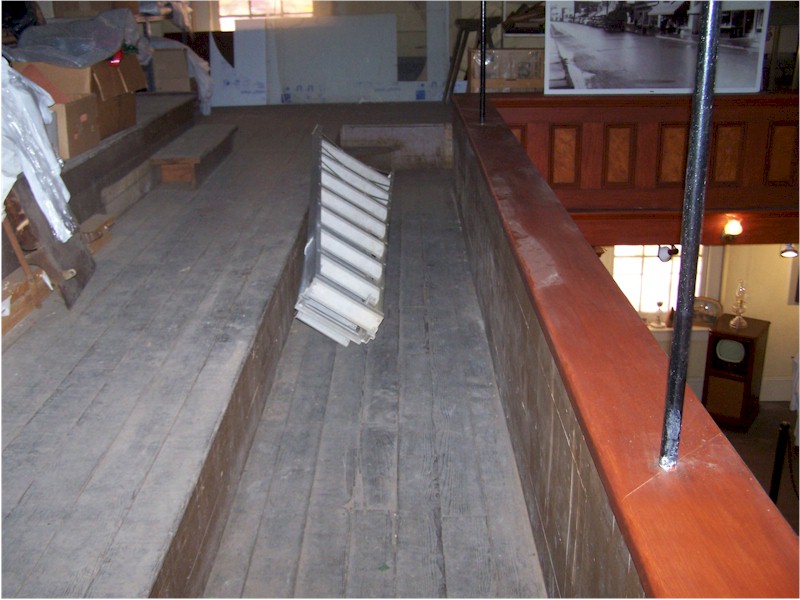
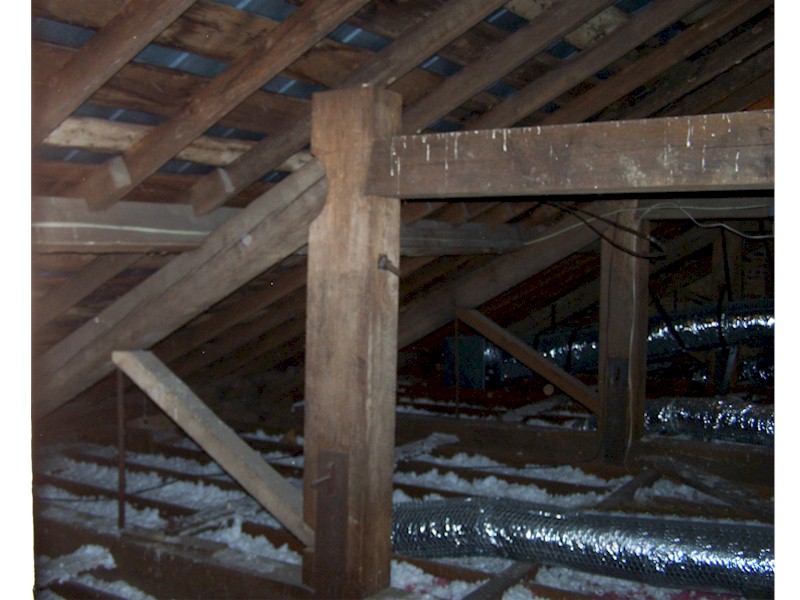
Read the Landmark Designation Nomination
Read the Landmark Designation Resolution
Read the National Register Nomination
St. Paul’s Church, ca. 1879, was originally founded in what was known as the village of Union Factory in 1855. It consisted of a small wooden structure that had been constructed on the present site, a hillside overlooking the nearby mill complex on Deep River. The land for the original small church had been donated by James Dicks, son of Peter Dicks of New Salem. In 1868, John Banner Randleman and John H. Ferree purchased the factory and renamed it the Randleman Manufacturing Company. In 1878, these two industrial partners called for the erection of a new St. Paul’s Church which they would donate to the community. In his homecoming speech in September of 1925, Reverend Amos Gregson gives credit to John Banner Randleman and John H. Ferree for providing the money and hiring the builders to construct the new brick St. Paul Church in 1879. Mr. Ferree and Mr. Randleman, as early community industrialist, were important not only as contributors to St. Paul’s Church, but to the community and town of Union Factory as providers of jobs to the local citizens. The Town of Randleman is named in honor of Mr. John Banner Randleman.
St. Paul’s Church, ca. 1879, has been fortunate to have maintained it special structural and architectural integrity since its construction in 1879. St. Paul’s Church was the first brick church constructed in Randolph County and used a simplified Greek Revival-style design with pointed-arch stained glass window behind the pulpit. Since its original construction in 1879 a wrought iron hand-rail was added, ca. 2000, and the window panes replaced ca. 1993.
St. Paul’s Church’s unique context in the history of the community of Randleman and the County of Randolph, in addition to its architectural significance as the first brick church in Randolph County, lies within the lives of some of the more influential members of the congregation. J.H. Ferree and John Banner Randleman cemented their place in the history of Randleman through, not only their part in the building of St. Paul Church, but their involvement in the early industrial boom that they helped to bring about to the area. John. H. Ferree not only held ownership in the Randleman Mills, but spread his influence beyond the community by holding ownership in the Naomi Cotton Mills and Central Falls in Randolph County.
On May 1, 1968, the Methodist Church donated St. Paul's to the North Randolph Historical Society along with .32 acres of land, while retaining ownership of the cemetery. The church currently service as a museum dedicated to preserving its history and the heritage of Randleman and North Randolph County.